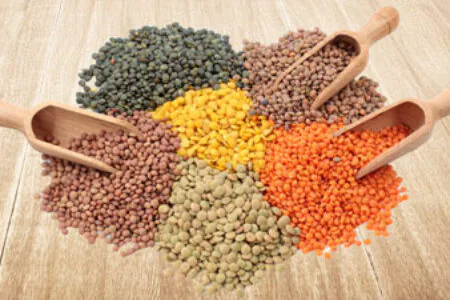
Phosphorus is an important nutrient for different parts of our body. It is a main component of our bones and teeth. Our muscles need it for energy metabolism and to store energy when they are at rest. Plus, we need phosphorus for our genes, our enzymes, and our cellular health.
Deficiency is very rare. When we follow a whole-food, plant-based (WFPB) diet, we get our phosphorus from phytates present mostly in legumes, whole grains, nuts and seeds. Yes, these are the same phytates that bind to iron, calcium and zinc, keeping us from fully absorbing them. But the more phytate-rich foods we eat, the more we grow the right bacteria to break them down, helping us absorb enough of all four nutrients to satisfy our body’s needs.
Toxicity, on the other hand, is much more common. Not through plant-based sources, but through animal-based products and processed foods that use phosphate additives. This is because we absorb 100% of phosphorus from phosphate additives while we only absorb 50% from plants.
Due to phosphate additives, most Americans consume twice the amount of phosphorus we need. Regular high-intake and absorption of phosphates can lead to kidney failure, heart failure, and it can accelerate aging and bone loss.
If we limit or avoid animal-based and processed foods, we still need to make sure we’re getting enough phosphorus for various key functions in our body. But again, this is easy to do when we eat whole, plant-based foods. Try our personalized calculator to see how much phosphorus you and your loved ones need. Continue to scroll down to discover some of this nutrient’s top plant-based sources and to read important facts.
Top Whole-Food, Plant-Based Sources
Hover over each food below to see how much phosphorus you can get with one serving. Click on each food’s picture to visit its interactive page with a personalized calculator of all the nutrition you can get from one serving, more information about how it supports our body, tips to choose and prepare it, interesting facts, and more!

Lentils
1 cup cooked = 28% DV

Oats
1 cup dry = 47% DV

Quinoa
1 cup cooked = 22% DV

Brown Rice
1 cup cooked = 28% DV

Pumpkin Seeds
1/4 c dried kernels = 32% DV

Portabella Mushrooms
1 c cooked = 23% DV

Soybeans
Mature 1 c cooked = 34% DV | Edamame = 21% DV

Sunflower Seeds
1/4 c kernels = 18% DV
Phosphorus Personalized Calculator
See how much phosphorus you and your family members need, according to the Dietary Guidelines for Americans, 2020-2025.
Terminology:
- Daily Value (DV): The recommended amount of nutrients to consume each day for individuals who are 4 years old or older.
- Adequate Intake (AI): This is an approximation of nutrient intake by a group or groups of healthy people, based on age, sex, and whether a woman is pregnant, lactating, or none. This is used when a Recommended Daily Allowance (RDA) cannot be determined.
- Upper Intake Level (UL): The highest amount of nutrient intake that will not pose adverse health effects on most individuals.
Important Things to Know
Comparison of Phosphorus Sources
You may be wondering about other potential sources of phosphorus, such as supplements and meat. Below we make a quick and simple comparison between the three options.
References









